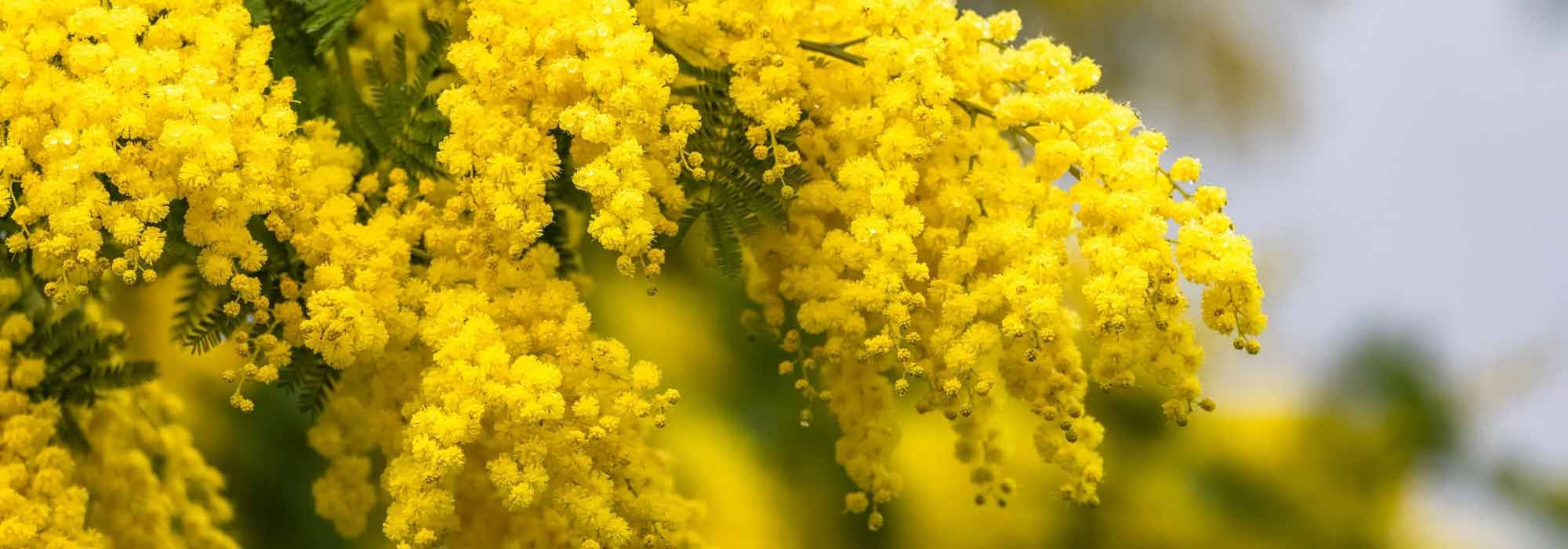
Which wattle to choose according to your region and its frost resistance?
Make the right choice as it fears the cold!
Contents
Its flowering often bursts forth in thousands of sun-yellow pom-poms in the heart of winter! Recognisable among all, the wattle is a tree infinitely appreciated by gardeners who enjoy this generous display of flowers when nature is at rest. Mostly native to Australia, mimosas, known as Acacias in Latin, are trees or bushes from the legume family. They have inherited a sensitivity from their distant origins, which confines them to gardens exposed to a mild climate, where frost is minimal and not prolonged. ‘Four-season’ wattle, winter wattle… If you have the perfectly legitimate desire to plant this beautiful tree in your garden, and you are wondering where mimosa grows in France, follow our advice to choose the most suitable variety: you will thus be able to fully enjoy its unique flowering!
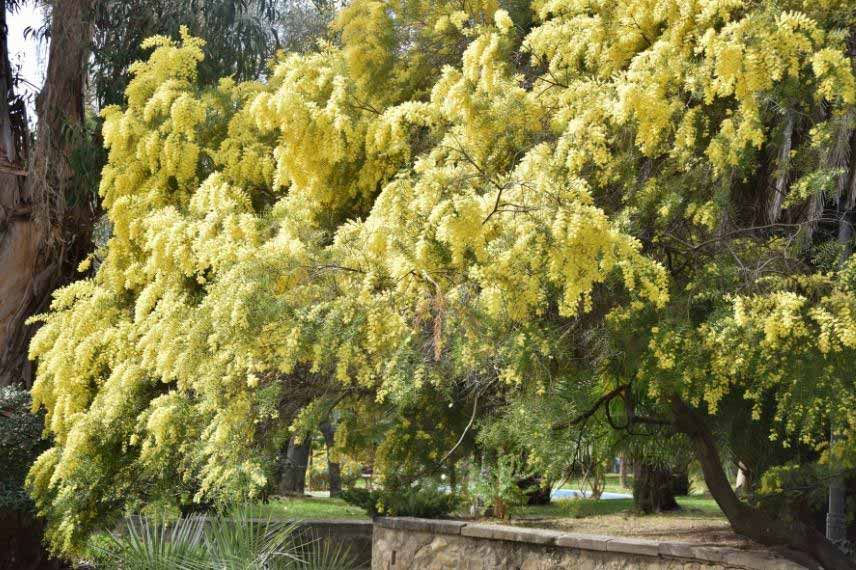
The incomparable generosity of mimosa in bloom
Grafted or own-root wattle: which choice for better hardiness?
Before choosing your mimosa, you must first consider whether it is grafted or not. Indeed, if it is grafted (as with wattle Gaulois dealbata), the advantages are twofold:
- Better tolerance to alkaline soil, as hardy mimosas generally prefer neutral or acidic soils. The rootstock of grafted specimens is usually Acacia retinodes or the four-season mimosa, which is tolerant of alkaline conditions;
- No risk of your garden being overrun by suckering Acacia dealbata specimens, as the rootstock will not sucker.
However, the rootstock will be more sensitive to frost than the scion. In case of a risk of severe cold, ensure protection for the aerial part as well as, and especially, at the base with a thick mulch.
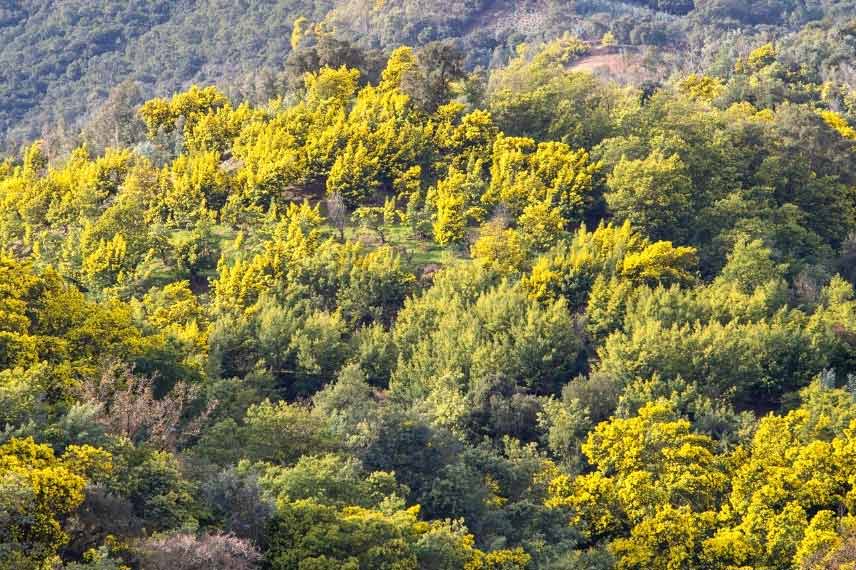
Highly suckering, Acacia dealbata has invaded certain areas around the Mediterranean. It is better to replace it with wattle Gaulois dealbata.
Read also
How to protect wattle over winter?Which varieties of mimosa are the most frost-hardy?
Among the varieties of hardy mimosa, some stand out for their ability to withstand moderate negative temperatures. Among them, we find:
- The four-season wattle (Acacia retinodes) is one of the most tolerant. This variety of mimosa can withstand frost down to -6 °C, and occasionally -10 °C in dry soil, sheltered from the wind and well-exposed. It offers the advantage of a spreading flowering period, sometimes even nearly continuous in mild climates.
- The pravissima wattle (Acacia pravissima), identifiable by its triangular blue-green foliage and lemon-yellow flowers at the end of winter, is also hardy down to -10 °C. It is perfectly suited for regions with moderately cold winters, provided it is given a location protected from the wind.
- The winter wattle (Acacia dealbata), better known as the florist’s mimosa, is another variety that can resist frost down to -8 °C, but can occasionally withstand -10 °C if the soil is light, well-drained, and exposed to sunlight.
Good to know: the choice of the hardiest mimosa should always be accompanied by planting in perfectly drained soil, fully south-facing and sheltered from cold winds. Mulching at the base in winter and using fleece on young plants is highly recommended in the first few years.
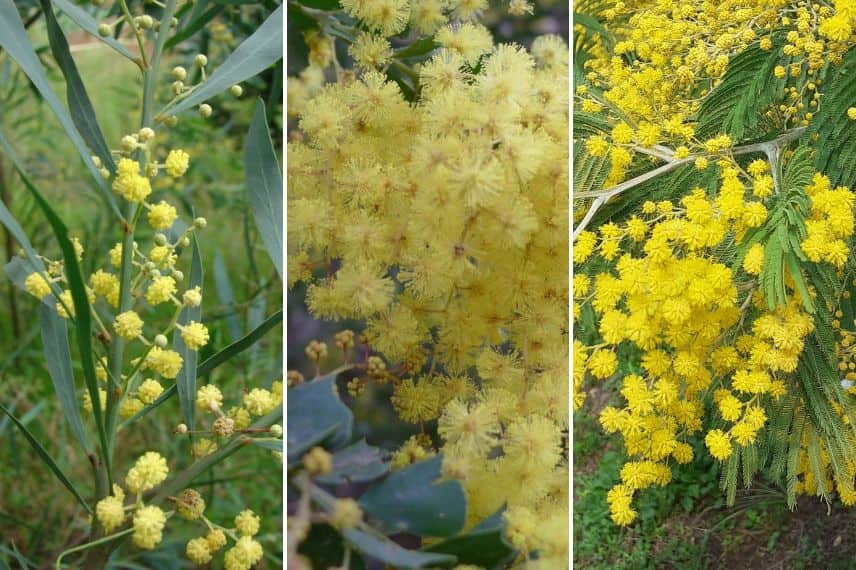 Three varieties of frost-resistant wattles: four-Season wattle, pravissima wattle, and winter mimosa
Three varieties of frost-resistant wattles: four-Season wattle, pravissima wattle, and winter mimosa
Discover other Acacia - Wattle
View all →Available in 1 sizes
Available in 1 sizes
Available in 1 sizes
Available in 2 sizes
Available in 1 sizes
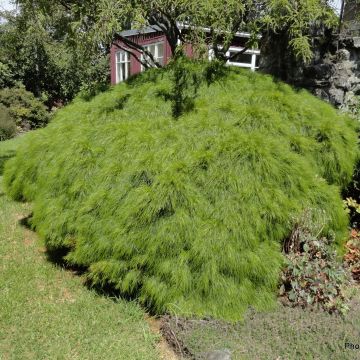
Available in 2 sizes
Available in 1 sizes

Available in 1 sizes
Available in 1 sizes
Which wattle to plant in a mild Mediterranean climate?
Gently caressed by the offshore wind and warmed by the sea currents, the Mediterranean coastal gardens benefit from a very favourable climate. This climate allows for the cultivation of plants from distant, warm regions, giving a unique aspect to the landscape. As January arrives, the southern gardens celebrate the beginning of the new year with an explosion of golden yellow, thanks to the Acacia dealbata, also known as florist’s mimosa or winter mimosa. Widely found on the Côte d’Azur and in the Mediterranean region in general, this evergreen mimosa can bloom until March in clusters of small, highly fragrant spherical flowers. It features finely divided blue-green foliage and has a spreading habit of 4 to 5 m with a height of about 8 m. It can be trained as a small tree or left to maintain a naturally bushy habit. Although not very hardy, it can withstand temperatures down to -7°C, allowing it to be planted further inland from the coastal area. The Acacia dealbata ‘Gaulois Astier’ (or florist’s mimosa), which is non-invasive, is grafted onto Acacia retinodes and is hardy down to -5/-6°C, showing good tolerance to alkaline soils.
The four-season wattmes, Acacia retinodes and Acacia retinodes ‘Lisette’, are the most floriferous mimosas. They bloom almost all year round from January, with regular flushes from May to November (hence the name four seasons), with an even more abundant flowering for ‘Lisette’. They produce generous, fragrant clusters of bright yellow flowers. These are large bushes with a flexible habit, spreading to about 4 m and reaching a similar height. They tolerate alkaline soils very well and also cope with drought. However, they struggle with temperatures below -5°C, so they should be reserved for the most sheltered localities!
Among the less commonly planted mimosas in gardens, we can mention:
- the blackwood mimosa or Acacia melanoxylon: a bushy tree reaching up to 15 m in height in rather cool, light, and well-drained soil. It grows quickly when conditions are favourable but does not withstand temperatures below -6°C. It produces beautiful light yellow flowers in spring.
- the dwarf mimosa Acacia cognata ‘Limelight’: a broad evergreen bush with fine, very dense foliage, about 60 cm high and spreading 1.5 m. A lovely groundcover for dry terrain, its spring flowering in small white pom-poms is not very noticeable. It also prefers soil without excessive lime.
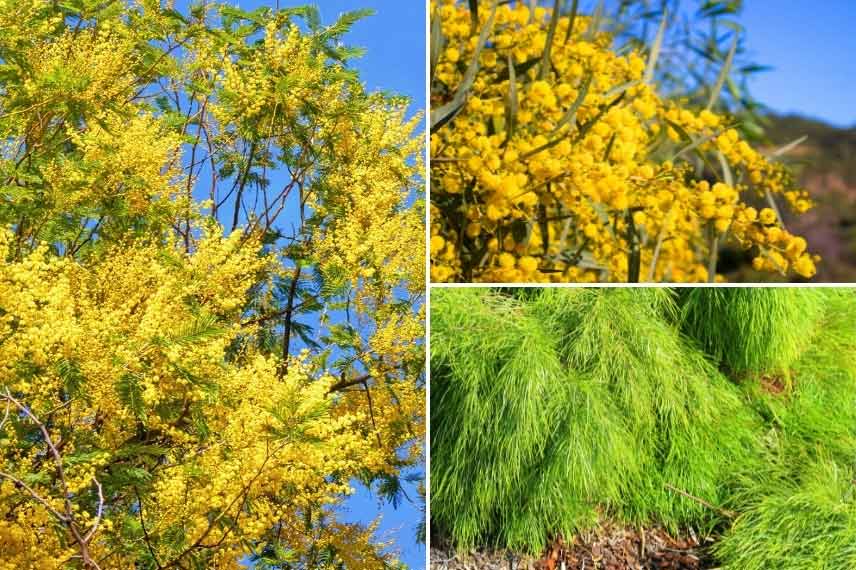
Acacia dealbata in bloom from January, Acacia retinodes and Acacia cognata ‘Limelight’
Read also
To grow mimosa in a potWhich wattle to choose for the Atlantic coast?
On the Atlantic coast, winters are mild and rainfall is higher than in the Mediterranean: two conditions favourable for the cultivation of certain mimosas. In areas benefiting from a microclimate particularly sheltered from the cold, you can attempt to plant Acacia dealbata, Mimosa Gaulois dealbata and Acacia retinodes. However, be cautious about soil drainage and cold, strong winds, as mimosas have a rather shallow root system.
One of the hardiest mimosas resistant to cold is the Acacia pravissima. This small evergreen tree, about 5 m tall, will delight gardeners in this area who plant it in their gardens with its very graceful, slightly weeping habit. Its evergreen foliage is unique: it is formed of small, flat, triangular leaves (actually phyllodia, growths resembling leaves) of a lovely bluish-green. Its spectacular and fragrant flowering occurs in March-April: small lemon-yellow balls grouped in beautiful inflorescences spread across all the branches down to the base. Indifferent to limestone, this hardy mimosa, which suits both wild and more sophisticated gardens, is drought-resistant and can withstand short frosts down to -10°C. The Acacia cultriformis, also known as knife acacia, has similar characteristics but will withstand lower temperatures (-8°C) and will tolerate less limestone in the soil.
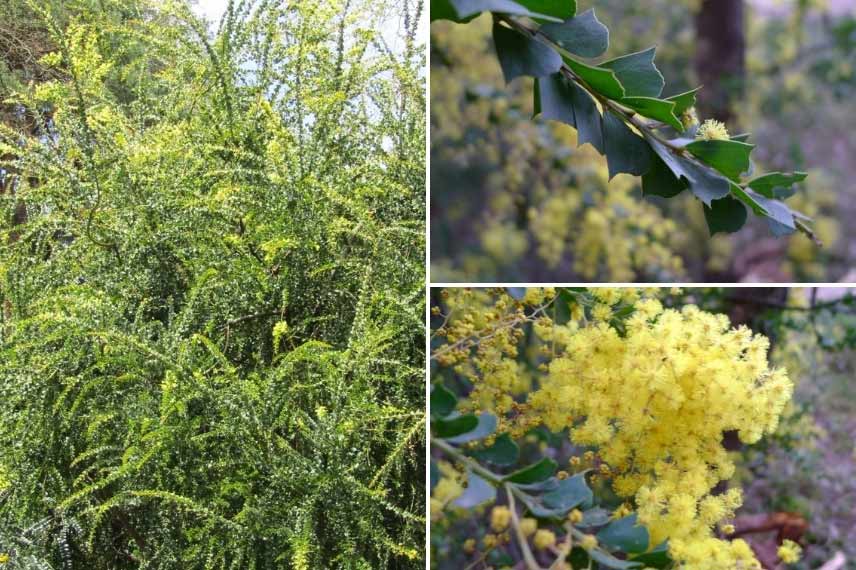
Acacia pravissima, a frost-resistant variety of mimosa for the Atlantic coast
Which wattle to choose for cold or continental climates?
Growing a wattle in the ground can be risky if you live in a region with harsher winters. Instead, choose to grow it in a pot. Opt for smaller species such as the Four Seasons Mimosas Acacia retinodes and Acacia retinodes ‘Lisette’. This way, you can enjoy the flowers when you can place them outside once the frosts are no longer a concern. Be sure to water your potted mimosa frequently, allowing the substrate to dry out between waterings. Adding organic matter is not essential for an acacia in the ground, as, like most Fabaceae, mimosas have the unique ability to fix nitrogen from the air at their roots. However, if your mimosa remains in a pot or container, you can assist it with a potassium-rich fertiliser to encourage flowering.

Growing wattles in a pot protects them from the cold in winter
Planting a wattle in the north: an impossible mission?
Planting a mimosa in the north is not impossible, but it remains a real challenge due to the climate and winter humidity. Even the hardiest species, such as Acacia pravissima or four-season mimosa, can suffer from prolonged frosts, especially in heavy, damp soil.
In open ground, it is essential to choose a location sheltered from the winds, facing south, on perfectly drained soil (consider a mound to avoid standing water). Winter protection with thick mulch at the base and a heavy fleece is indispensable.
For added security, opt for pot cultivation, overwintering in a bright, frost-free shelter. This is the best option to enjoy winter flowering without risking losing your mimosa to the first severe frost. Bring it out as soon as frosts are no longer a concern, and bring it back in before the first cold nights, usually in October. Ideally, shelter it in a cool conservatory, greenhouse, or a bright, unheated room.
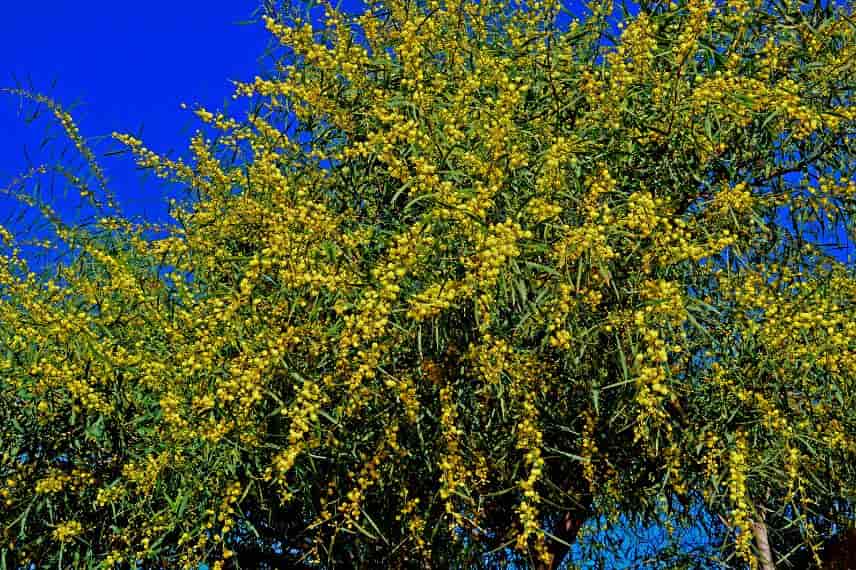
Four-season mimosa: a variety of mimosa resistant to light frost
For further reading
Discover our other guides to successfully grow mimosa:
- Wattle, Acacia: planting, pruning and care
- Growing a wattle in a pot: all our tips for successful cultivation
- How to protect a wattle for winter? The right actions to protect it from the cold
- Subscribe!
- Contents
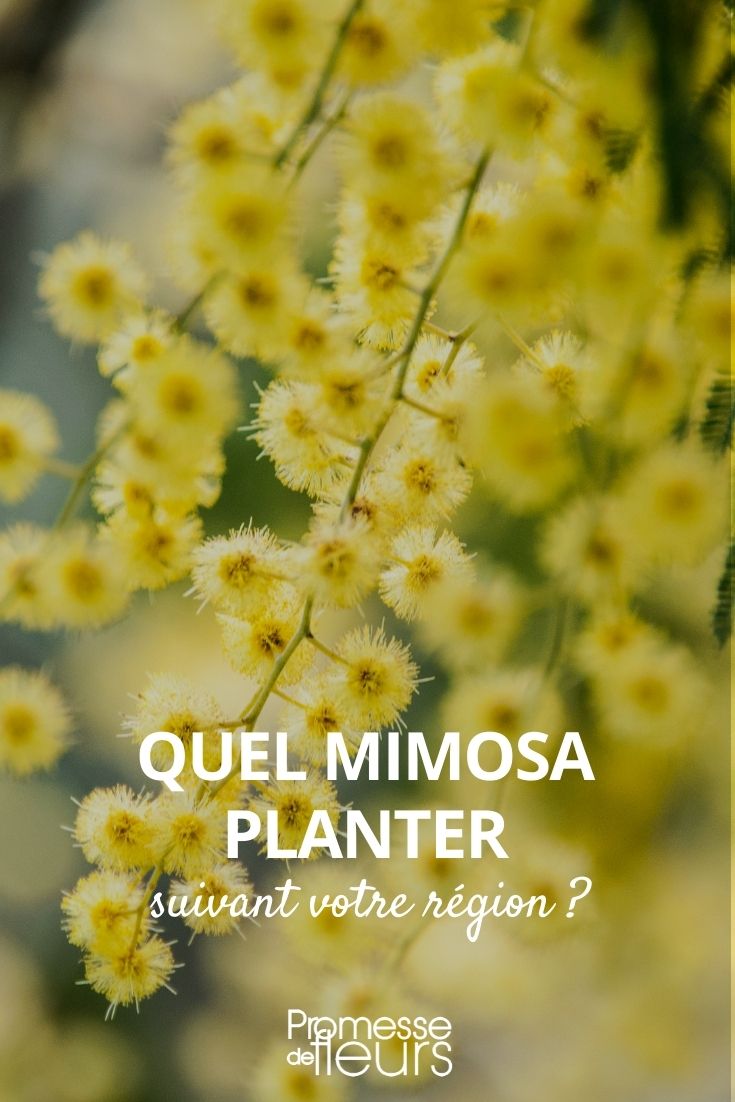
































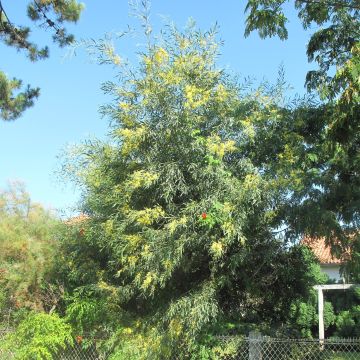
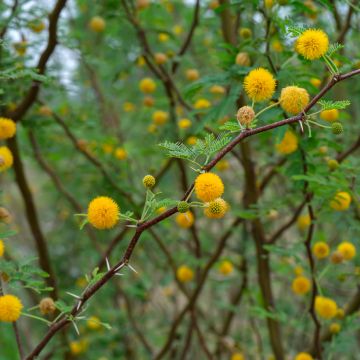

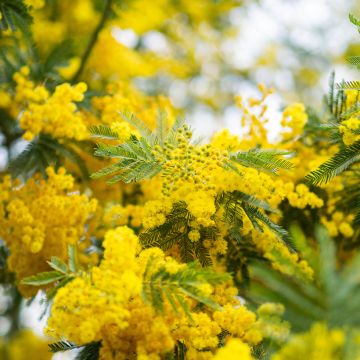
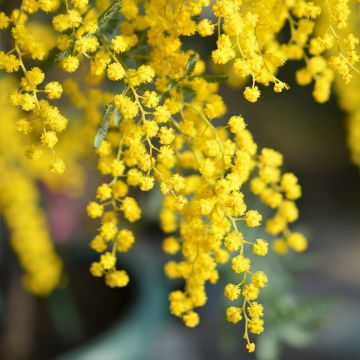
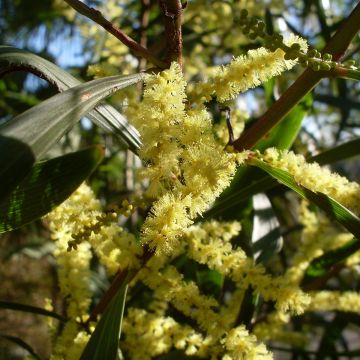
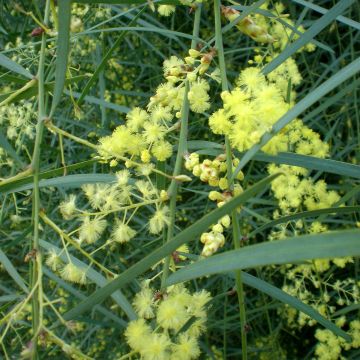
Comments